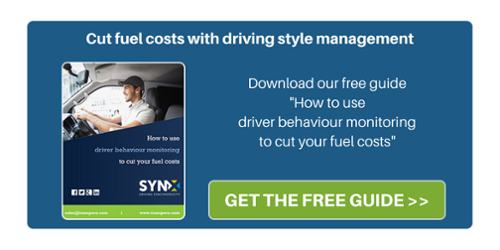
In order to set up a good strategy for companies to cope with the risks associated with their vehicle/fleet activity, driving style monitoring is a great starting point as it allows the capture of driver behaviour that might be unsafe or inefficient and therefore in need of correction. If this is combined with an ongoing driver behaviour programme, it can not only make the difference regarding the safety of your fleet but also to your fuel consumption.
This principle seems logical enough to those who understand the potential of driving style monitoring, but despite this making so much sense, are fleet management or those responsible for vehicles really taking positive action in order to improve driver behaviour?
According to a recent survey shared by Fleet News, it seems companies openly focus on fleet safety but do not actually take action when it comes to driver behaviour monitoring, though this is typical of some fleets and not valid for all of them. The employers of 55+ years in particular, who manage professional drivers, seem to place little importance on driver behaviour management—54% of them do not take any action at all where this is concerned. Interestingly enough, 18-34 year olds with the same type of responsibility are a completely different story—only 6% of the interviewed do not enact driver behaviour monitoring. All in all, it seems younger managers are more likely to employ technology, or in any case tackle this aspect.
According to the same research, it seems companies are more worried about cyber security, which proved to be a concern for 63% of the interviewed, while road safety seems to worry less business representatives, an issue for 57% of the interviewed. A change of attitude is probably needed, and it appears that those who have been in the business for some time might not immediately rely on new technologies.
Other research carried out by the Universities of Lisbon and Coimbra focusses on the results provided by companies offering real-time driving behaviour feedback and no feedback at all. The 2017 study, targeting a public transport bus provider, focusses on particularly dangerous or inefficient driving styles including hard starts, hard stops, extreme braking, extreme acceleration, idling, excessive revving and speeding. Vehicles have been monitored in three phases: during the first and third, drivers have been provided with real-time feedback on their manner of driving, while in the second period they have not been provided with feedback at all.
According to the study, the bus company (and, eventually, the driver) benefited from receiving real-time feedback and modified their conduct behind the wheel, while the incidences of unsafe or inefficient driving behaviour increased when they received no feedback, only to be reduced again when the real-time feedback on their driving style resumed.
The results of this research affirms the idea that, if done in an intelligent way, driver behaviour monitoring can definitely help companies improving on safety and decrease fuel consumption if drivers embrace the scrutiny and adopt safer behaviours over time, while the ability of maintaining them seems to decrease with time if action when necessary isn’t taken.
Driver safety training
Another equally important aspect of driver safety monitoring is driver safety training. The employer manages to ensure driver safety by providing necessary training and controlling the documents related to the vehicles. Th easiest way to ensure this training is done properly is during the orientation with a new worker who can be ready to start working once complete.
However, ensuring optimised training for existing drivers, especially for large fleets can quickly become a challenge. When working with contractors, the situation can worsen and keeping track of all the relevant and updated information can easily turn into a nightmare.
How can technology help? By adopting technology like Contractor Management Platform to deliver online training to drivers could help ensure that every driver receives safety training and is ready to hit the ground from day 1 on-site.



